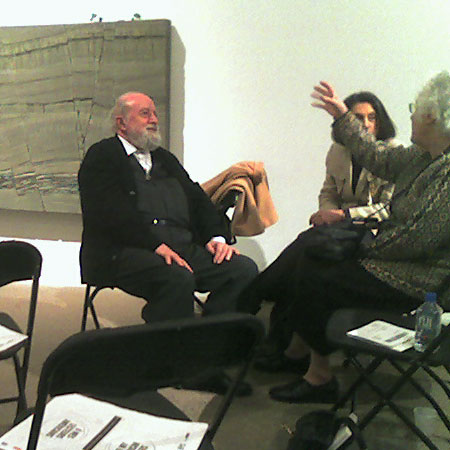Greg Grandin explains why Hugo Chavez calls Bush “Mr. Danger”: it’s a reference to Rómulo Gallegos’s 1929 novel Doña Barbara, evidently the most famous Venezualan novel. Chavez’s epithet has been repeatedly trotted out as evidence of his craziness – why has nobody in the press bothered to talk to an educated Venezualan, who would presumably recognize the reference? One wonders if all reporting about South America is so elementarily flawed.
Category Archives: noted
variously, mostly translation
variously
kleist’s “on the puppet opera”
Online here in the translation of Philip B. Miller.
various new(ish) things at ubuweb
and many more things I haven’t had time to sift through.
audio interviews with artists
Courtesy of MOMA, here (mentioned in this NY Times article on museum podcasts).
gilbert sorrentino is dead
stars on heads, towards a logic of
(Previously.)
First:
Also:
Although:
two books to track down
Both almost invisible on the Internet:
- Chris Marker’s The Forthright Spirit (Wingate, London, 1951), a translation of Le Cœur net (Paris, 1949), a novel by the film maker. An amazon.co.uk listing here, this site declares that it’s “about two days in the lives of a network of friends & memories, centering around a solitary airmail pilot caught in a rainstorm over the jungles of Vietnam in the aftermath of ‘a major war’. The dust jacket says nothing much about the author other than that he ‘likes radio more than literature, cinema more than radio, and music most of all.'” Dalkey thinks it should be reissued.
- Barbara Moore, CookPot (ReFlux Editions, 1985), cover visible here, something of a Fluxus cookbook, with recipes by La Monte Young & Carolee Schneemann and probably others. Mentioned in Owen F. Smith’s Fluxus: the history of an attitude; evidently this was originally to be published by Fluxus in the 1970s, then wandered over to Dick Higgins’s Something Else Press, and then Moore printed it herself in 1985.
variously noted
Michel Butor is still not dead and was in New York on Friday. He looks like Santa Claus:

(in this picture, his wife is explaining something to him.) Will attempt, with the help of his translators, to get some of his poetry into print in English and possibly an interview – despite his old website, he evidently hates the Internet, good man.
Also, there’s an article in the New York Times about Brian O’Doherty, which mentions, in passing, Aspen 5–6 which he put together, and which seems like, in retrospect, maybe the best single (well, double, but) issue of a magazine ever.